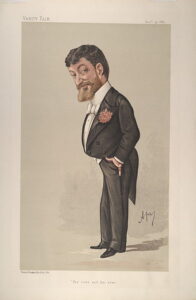Tosti, Tristezza

The Neopolitan Song (Canzone napoletana) flourished from the mid 19th to early 20th century. While songs of this genre tended to be newly composed, they drew heavily on the folk traditions of Naples and the surrounding area. Highly melodic and passionate, they were usually sung by tenors and were popularized as encore pieces (think O sole mio and Funiculì, Funiculà for example) by operatic singers like Enrico Caruso and Mario Lanza. The next generation of tenors such as Luciano Pavarotti and Plácido Domingo continued to record these songs.
Francesco Paolo Tosti (1846-1916) became one of the prominent composers of the genre. He was born in Ortona, Italy, and entered the Naples Conservatory in 1858. His early songs Lamento d’amore, Non m’ama piu, and L’alba separa dalla luce l’ombra brought him fame and, after moving to Rome in 1870, Princess Margherita of Savoy, the future queen of Italy, asked him to be her singing teacher.
Tosti traveled to London in 1875 and eventually settled there. He became the singing teacher for the British royal family, was appointed singing professor at the Royal Academy of Music, and was regarded as the most popular composer in England. He became a British citizen and received his knighthood in 1908 from Edward VII. After Edward’s death in 1910, he returned to Rome.
If you find yourself in Ortona, you can visit the Tosti Museum, which houses his archives and works by other composers of the Abruzzo region. To prepare for the trip (and practice your Italian), try this video hosted by the singer Vittori Prato (whose performance of the Don Quixote songs makes an important contribution to our Composer of the Month page on Maurice Ravel). Prato is planning an album of Tosti’s English songs.



